Life as a music photographer can be pretty incredible. Spending time with some awesome artists, listening to great music all the time, traveling the world, and creating inspiring artwork. If you’re a photography lover and/or music fan, music photography might seem like the dream career.
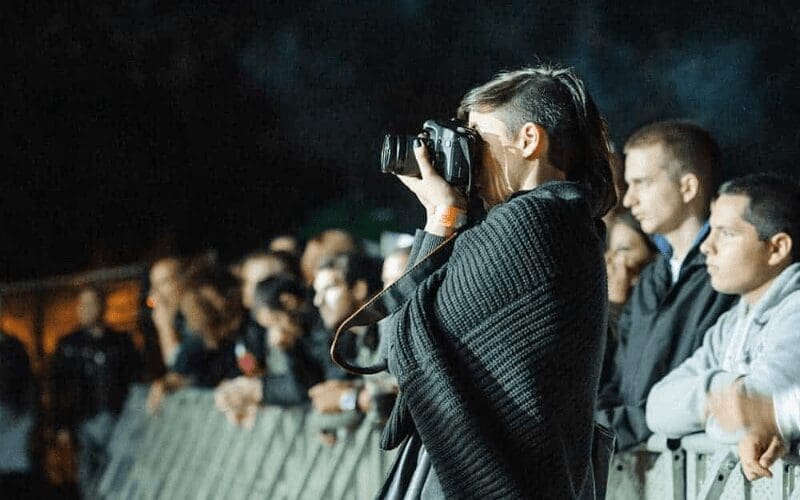
At Мusic Gateway we’re hoping to show how you can get into music photography.
This guide will walk you through what it’s like being a music photographer. As well as music band photography, concert photography, routes into the industry, and equipment you’ll need for your setup.
Stay tuned for everything you need to know about music photography!
What Is Music Photography?
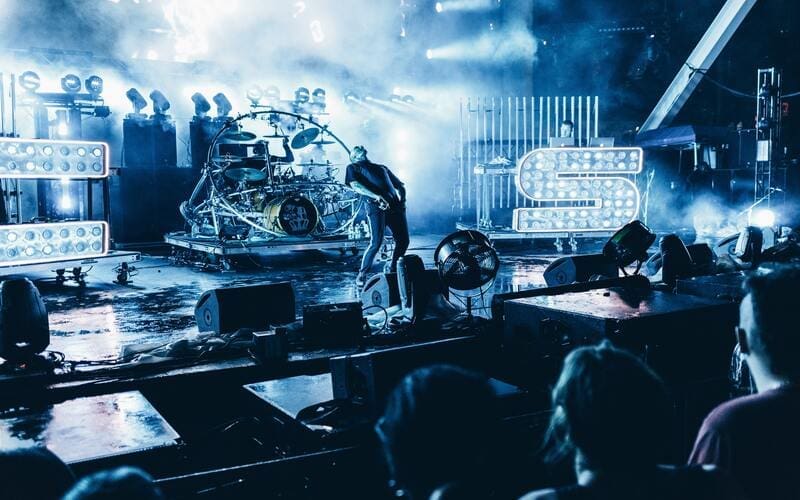
Music photography is a profession in the music industry where photographers take photos of artists or bands. Usually for commercial purposes. Such as magazine features, PR, album covers, and merchandise. Some music photographers specialise in live gig photography while others focus on professional, staged shoots.
Firstly, most photographers would say music photography is one of the most challenging gigs out there. Music photography, especially live music photography, is incredibly demanding. With fast and unpredictable movement, low light, and brief shooting time.
Music photography for album covers or merchandise is frequently tied to a concept for the musician. It can be incredibly creative and artistic. Requiring complex shooting locations or hours of editing post-shoot. Moreover, it’s also a highly competitive industry where it pays to work hard and network effectively. Music photographers most frequently interact with band publicists, band managers, and venue/event promoters.
Music photography is vital to the music industry as it often forms the focal point of visual branding. The reason we remember G-Eazy for his iconic perfectly-slicked-back middle part is that the music photographer collaborated with his branding team to define this image in countless shoots and gigs.
Moreover, photography is all about helping you see things from new perspectives. For fans and artists, music photography can provide a glimpse into a world most of us are barred from. Furthermore, photographs can show artists as vulnerable or defiant, meek, or walking on air. Either way, they provide a visual pairing. As well as a deeper understanding of the music and lyricism of their work.
How To Get Into Music Photography
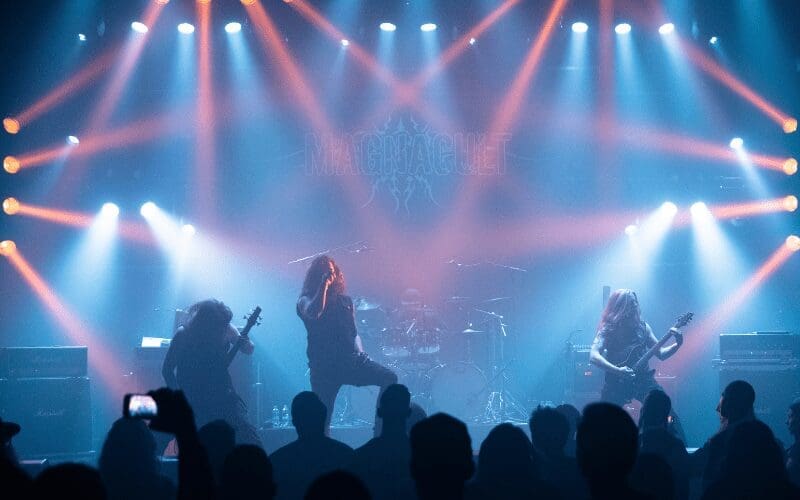
Firstly, it’s worth saying that most music photographers are freelancers. Some big venues or music PR agencies might have full/part-time roles (‘House Photographers’) available. But, these are relatively scarce.
Most bands will hire a freelancer for a shoot or gig or tour. As with all freelancing work, there are multiple routes you can choose to go down.
Today, we’re breaking the options down. Going DIY, getting hired by a big company, or gaining a relevant degree.
Go DIY
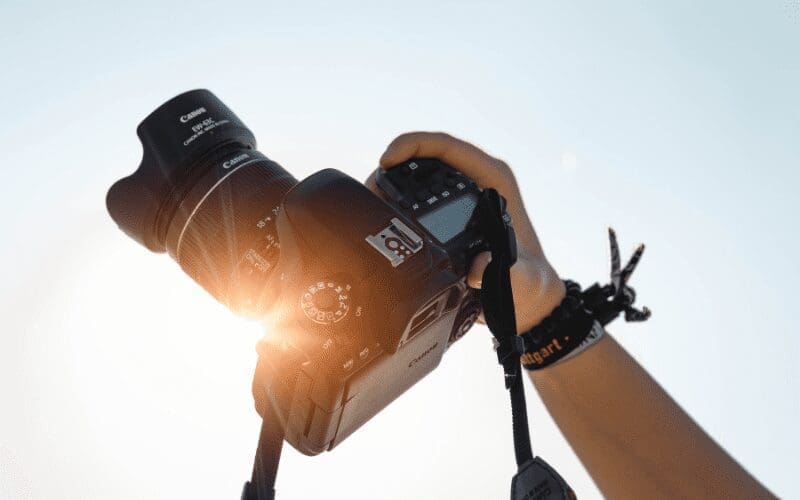
Around half of professional music photographers got into music by developing their skills on the job.
Start small if you’re still honing your photography/editing skills. Shoot your friend’s gig. Or, ask a small local venue or band that you’re passionate about if you can shoot a gig in exchange for a free ticket. Moreover, build a portfolio and online presence through a blog or Instagram page dedicated to your work.
Pitch yourself as a Music Photographer and ensure you provide contact information for interested parties to get in touch. Many music photographers begin by contributing photos to blogs for free while they’re learning the ropes.
Furthermore, the stage at which you feel confident charging for your work will vary. However, it’s important to be self-aware and value your skills, or no one else will!
Use your portfolio to pitch yourself to publications. Print or online – as a photographer for concerts or interview shoots. By this stage, you should be getting paid for your work. Moreover, it’s common for music photographers to be paid per project. Or per licensed photograph approved by the publicity team.
Alternatively, some music photographers build up a portfolio by starting their own music blogs. As well as working as both journalist and photographer. This way you don’t need to pitch yourself to big companies. But you will need to put in a lot of (unpaid) hours before seeing it pay off.
Proof of your interest in music and photography will be incredibly well evidenced by the initiative and work that a blog like this will demonstrate. Therefore, seeking gigs in the future might be a lot easier.
Get Hired By A Big Company
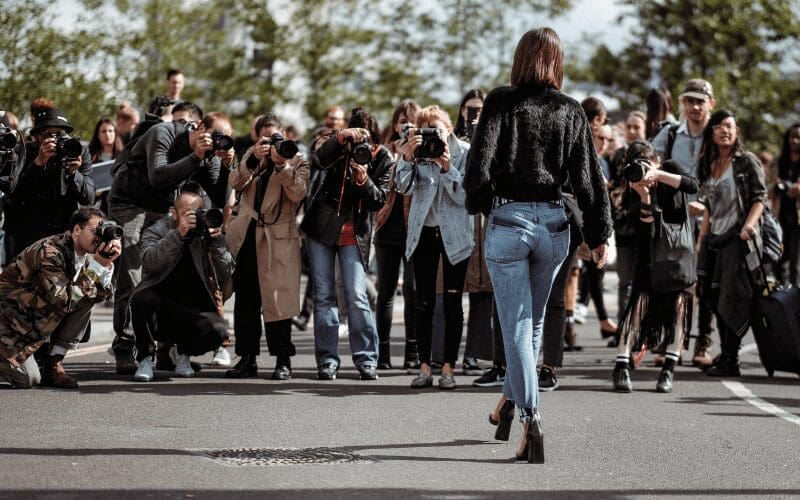
For many, this might be preceded by DIY work! After learning how to be a photographer at concerts and volunteering/working for local venues or bands, you may then be hired as a regular photographer.
This is a big step forward, particularly if you are hired by a venue. This will mean increased stability in your career in music photography. Persistently pitching your concert photography to publications will increase the likelihood of getting hired. However, it’s also important to get to know managers, publicists, and promoters.
For many music photographers, moving to a big city famous for its music led to organic networking that secured opportunities and permanent jobs. If you’re wondering how to become a touring music photographer, these connections are even more vital.
Tours are incredibly intense and bands won’t want to work with a music photographer every day if they don’t trust and respect them. You have responsibility for capturing the mood of the music. The atmosphere of the audience, and the personality of band members. Photographers need to be personable, professional, and trustworthy to capture these in a way the band likes.
Learn The Trade At University

For emerging creatives interested in the overlap between music and art, the technical aspects of photography, composition, and editing might be a little daunting.
While these skills can certainly be self-taught, many universities offer vocational photography courses with practical components.
Some universities can give you the best music band photography tips to get into the industry. As well as exhibiting your work and linking you to a network of professional industry contacts.
What Degree Do You Need To Get Into Music Photography?
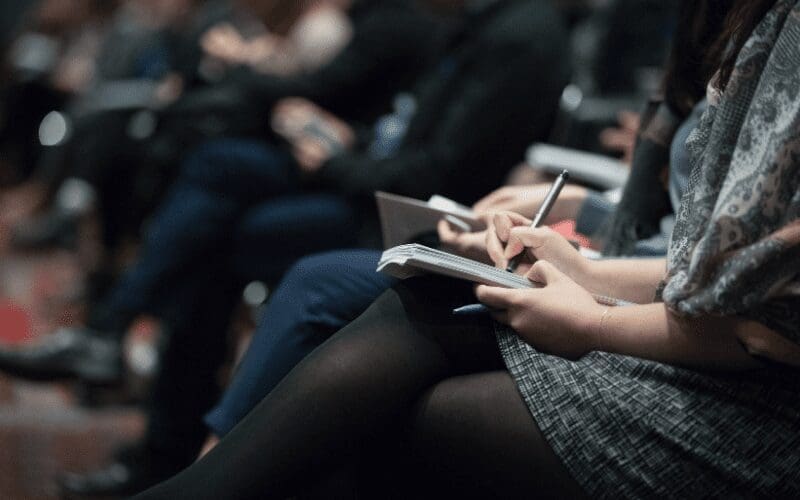
For those just beginning their career as a music photographer, studying for a relevant university degree can be a useful route into the industry.
How useful the degree is will depend on the university. Photography, Media Studies, and Journalism would all be relevant courses to pursue whilst honing your skills. You could even go DIY whilst at university. This would increase your portfolio and career prospects upon graduation.
Perhaps most important is the city you study in. The closer you can be to a buzzing music scene, the better.
Some of our top university course picks are:
University of Westminster
BA Photography (with the option for a foundation year). This university offers students the option to study abroad for a year. As well as a Major Project as a public exhibition.
Situated in the city of London, famous for its vibrant cultural life, there should be numerous opportunities to get involved in the music scene alongside your studies.
Manchester Metropolitan University
BA (Hons) Photography also offers a study abroad or placement year for students.
The university’s strong links with Manchester’s exciting music scene is hugely beneficial. This is considering that final year students are expected to have specialised in creative practice. As well as achieve an applied research project with third-party groups in the area.
Edinburgh University’s College of Art
BA Photography is situated in the bustling Scottish capital where the world-famous Fringe festival is held every year. This college provides optimal opportunities for live event photography at professional and amateur levels.
The course is a minimum of four years. By second year, students are given their own workspace and bookable installation spaces which could be a great platform for exhibitions.
For some more recommendations, check out our article on the Top Music Universities In The UK.
University isn’t for everyone – we get it.
As we said before, music journalism can be another great way into music photography. Once again, keep it creative! Check out blogs and local papers.
Investigate freelance writing work and try to specialise in music articles or interviews where you might be able to interact with music photographers.
Above all, keep your portfolio professional and up to date for when you’re ready to make the leap into music photography.
Music Photography Equipment
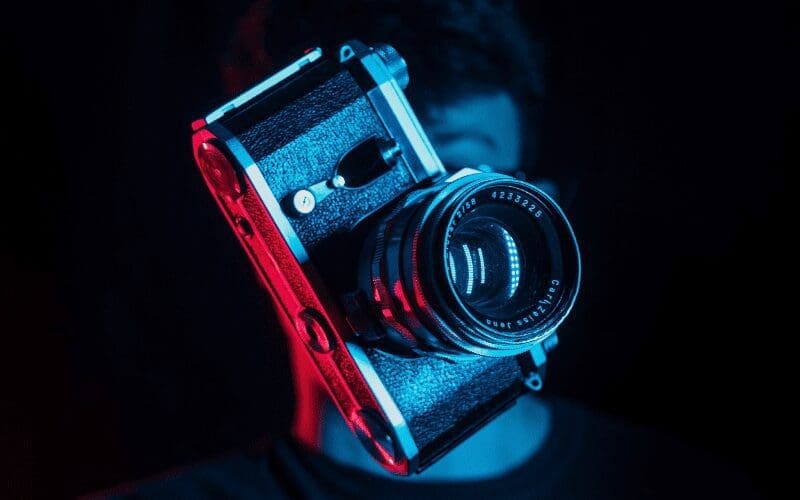
Although it should go without saying, we want to remind you the latest photography equipment won’t make you a better photographer. Spending weeks researching the very best lens for music photography, especially as an emerging artist in this space, might just leave you with all the gear and no idea!
Most music photographers suggest working with that until they encounter job-specific problems that are impacting the quality of their photographs. Such as the need for a wider lens or high-quality microphone if you end up diversifying into music filmmaking.
What are you looking for in a camera as a music photographer?
- Budget-friendly and a reliable brand
- Fast burst speed (3+ per second is good)
- Quick autofocus
- Fast shutter
- Weather-resistant (for outdoor concerts etc)
- Good battery life
- Low light performance
The Canon EOS 4000D or the latest Nikon D3500, for example, are beginner friendly whilst still offering some useful features at a reasonable price.
Beginning your portfolio will likely involve a lot of ‘free shoots’. So an incredibly high upfront cost isn’t necessarily too savvy as a freelancer/small business manager.
Music Photography Exhibition
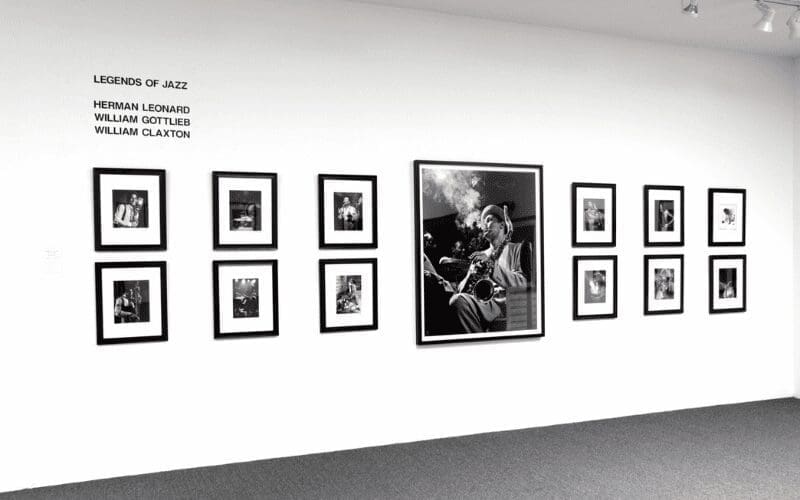
Music photography exhibitions may not have been revealed or on general release yet, but here are a couple of online exhibitions we think you’ll love:
Yorkshire Sculpture Park’s Banghra Lexicon – Hardeep Sahota
This exhibition captures the iconic Punjab form of music and dance on camera through light painting.
The photographer behind the project is Tim Smith.
Maddox Gallery’s Every Picture Tells A Story – Terry O’Neill
Legendary celebrity photographer, O’Neill, who passed away in Autumn 2020 is celebrated through this immersive virtual gallery.
While not technically a music photography exhibition, it is a masterful demonstration of how to capture artists’ personality through photography. Whether it’s Frank Sinatra, Brigitte Bardot, or David Bowie.
Check out the Rock Archive for their new music photography exhibitions. In the past, they have included ‘Inside Abbey Road Studios’. This is a photographic exhibition on Manchester’s rock music history (in collaboration with the University of Manchester). Additionally, they have included a Jill Furmanovsky exhibition.
That Was Our Guide On Music Photography
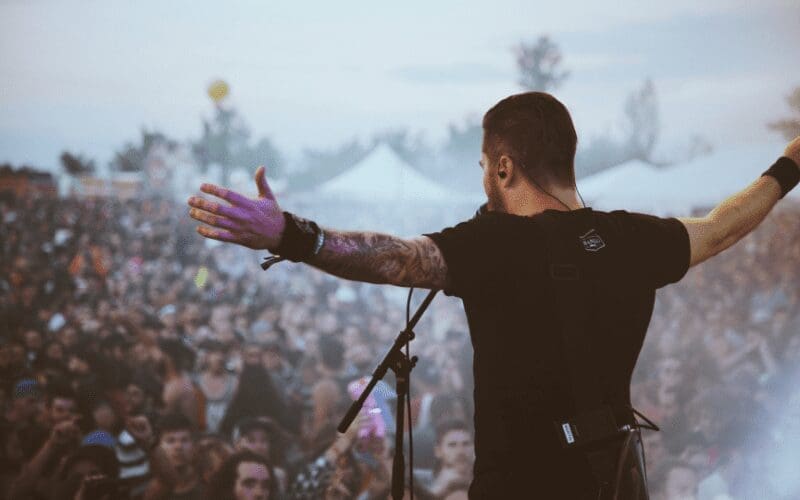
That’s all from us at Мusic Gateway!
This article covered everything you need to know to become a music photographer. From what the profession involves, how to build up a profile, how to get gigs, which university courses could help you get into music photography, and what equipment you’ll need.
Hopefully, you’ve also had a chance to check out some inspiring work by experts in the field and are ready to start building up a portfolio of your own! Happy snapping and good luck!
Are you a music photographer? Let us know your experiences in the comments below! Also, don’t forget to share this guide across your socials and tag us @musicgateway!










